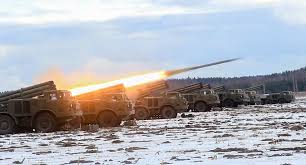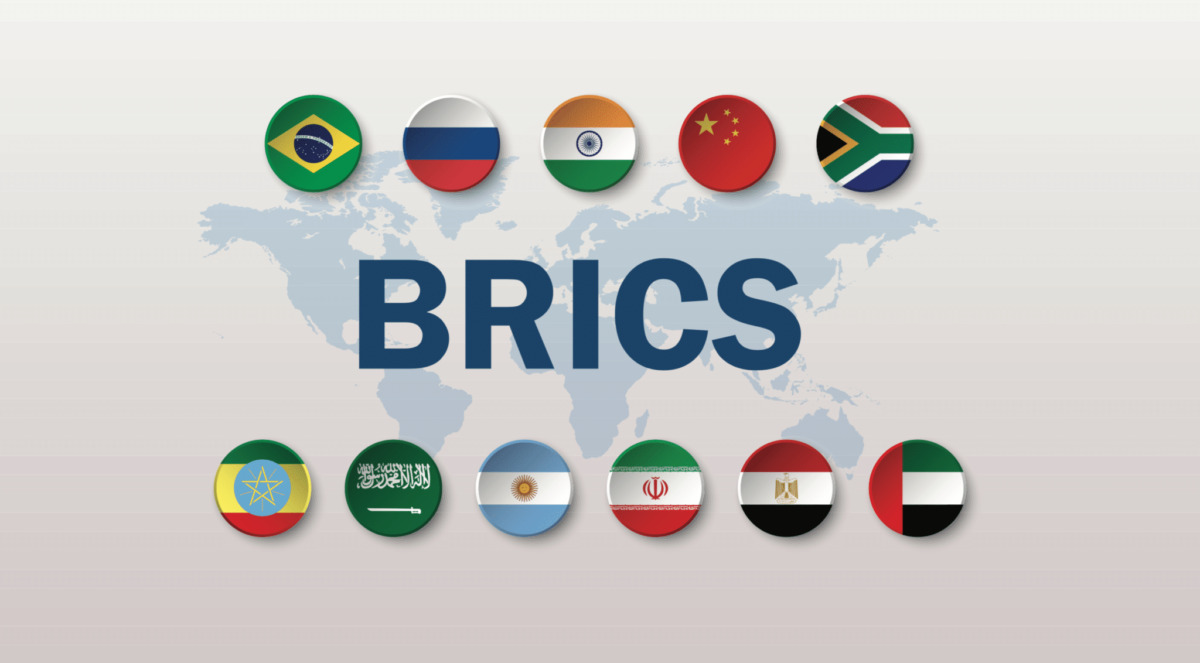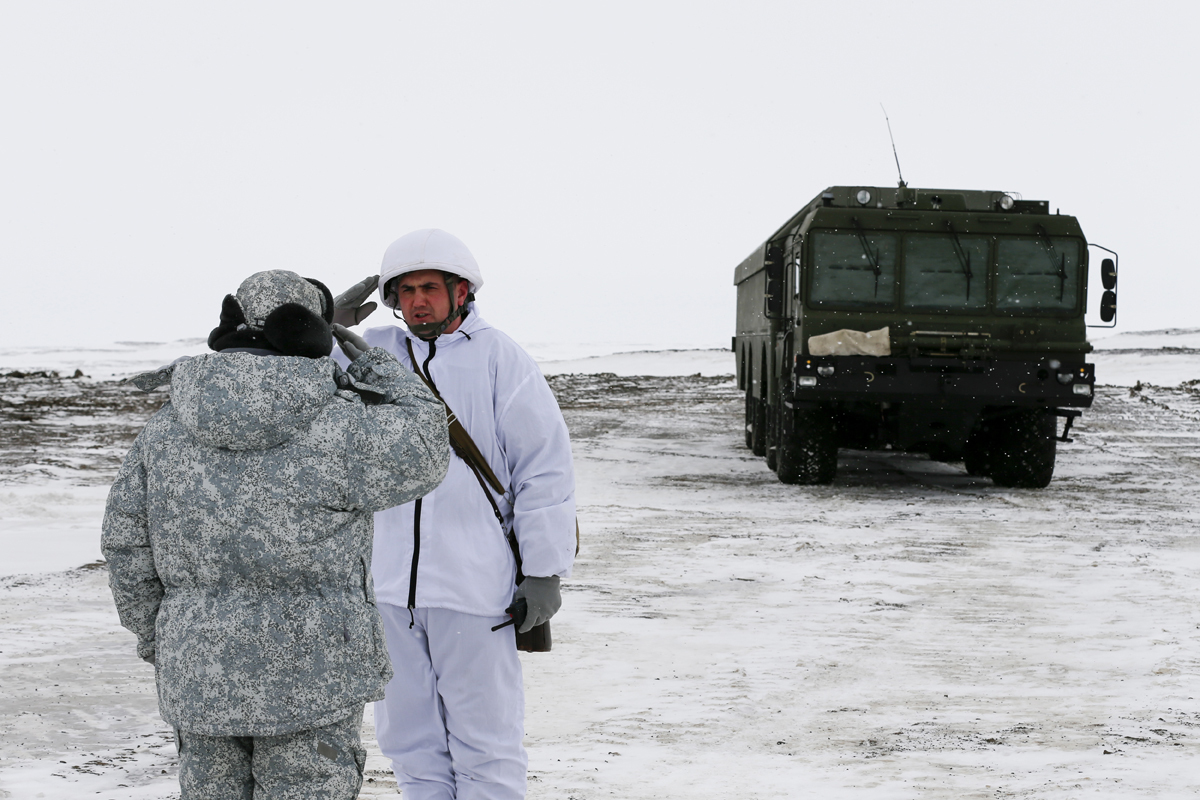Results of the first stage of the special military operation
It seems that the Kiev regime is only pretending to participate in the negotiation process, but in fact it is following external instructions to aggravate the overall situation
INSTITUTE FOR INTERNATIONAL POLITICAL AND ECONOMIC STRATEGIES
The Ministry of Defence of the Russian Federation summed up the results of the first stage of the special military operation in Ukraine. Information on March 29, 2022 was provided by Russian Defence Minister Sergey Shoigu at a conference call of the leadership of the Ministry of Defence of the Russian Federation.
Sergey Shoigu said: “In general, the main tasks of the first stage of the operation have been completed. The combat potential of the Ukrainian armed forces has been significantly reduced, which allows us to focus our main attention and efforts on achieving the main goal – the liberation of Donbass.”
He also said that the Russian Armed Forces will continue the special military operation until the set goals are achieved. These goals were set by the Supreme Commander of the Armed Forces of the Russian Federation, Russian President Vladimir Putin, before the start of the operation – the demilitarisation and denazification of Ukraine.
According to the assessment of our Ministry of Defence, during the first stage of the special military operation, the Ukrainian Armed Forces suffered significant damage. Air supremacy has been won. The air force and the air defence system have been practically destroyed.
123 aircraft out of the 152 that were with the Ukrainian Armed Forces before the start of the operation were destroyed, as well as 77 out of 149 helicopters, 152 out of 180 long- and medium-range air defence systems.
The naval forces of Ukraine have ceased to exist. All formations of ground and amphibious assault troops suffered significant losses.
Over the past two weeks, about 600 foreign mercenaries have been killed, and more than 500 ones have left the country. Earlier, the head of the Main Operational Directorate of the General Staff of the Armed Forces of the Russian Federation, Sergey Rudskoy, reported that 6,595 foreign mercenaries and terrorists from 62 states had been transferred to Ukraine.
Sergey Shoigu also pointed out that Russia would respond adequately if NATO supplies of aircraft and air defence systems to Ukraine were detected.
The Russian Defence Minister said that Russian servicemen are providing assistance to the population of the LPR, DPR and Ukraine. 684 humanitarian actions were carried out. 6079 tons of cargo were delivered to 210 settlements.
The next round of Russian-Ukrainian negotiations was held in Istanbul on March 29, 2022. According to the head of the Russian delegation, Vladimir Medinsky, the negotiations “were constructive”.
According to the statement of the Deputy Minister of Defence of Russia Aleksandr Fomin, due to the transition of negotiations to the practical plane, the Ministry of Defence of the Russian Federation “will radically, many times, reduce military activity in the Kiev and Chernigov directions”. This measure will be taken “in order to increase mutual trust and create the necessary conditions for further negotiations”.
Vladimir Medinsky noted that de-escalation in these regions does not mean a ceasefire. Aleksandr Fomin also called on the Ukrainian authorities to strictly comply with the Geneva Conventions, including those relating to the humane treatment of prisoners of war, and to exclude torture.
The conditions preferred for Ukraine were submitted to the Russian side in writing. As V. Medinsky said, this is “their clearly formulated position on inclusion in the treaty.” He also added that it was initially determined in Moscow that a meeting between Russian President Vladimir Putin and Vladimir Zelensky would be possible when the parties will work out the [future] agreement.
In particular, we are talking about the preparation of an agreement on the neutral and nuclear-free status of Ukraine, providing Ukraine with security guarantees in the future.
Ukraine intends to abandon its military bloc and nuclear status, refuse to deploy foreign military bases on its territory, refuse to conduct military exercises on a bilateral and multilateral basis without the “consent of the guarantor states, including Russia”. Ukraine, on top of everything else, refuses to produce and deploy all types of weapons of mass destruction. The Russian side stated that Ukraine still has the right to become a member of the European Union.
But there are some points to which close attention is not being paid yet. The fact is that Ukraine can no longer enter the NATO bloc. The Alliance has already denied Ukraine of this. However, for a while it was done in oral form. Foreign military bases in Ukraine have been destroyed. There is no question about joint military exercises at all. The nuclear-free status, non-development and non-placement of WMD are already guaranteed by the Armed Forces of the Russian Federation. It turns out that nothing interesting happened in the negotiations. Only what was already secured is officialised.
In addition, representatives of the Ukrainian regime have already begun to partially disavow the agreements reached before the negotiations.
Immediately after the talks, the head of the Ukrainian delegation, David Arahamiya, said that they only recognise “the international borders of Ukraine as of 1991”. Then the Permanent Representative of Ukraine to the UN, Sergey Kislitsa, said that the signing of an agreement on security guarantees for Ukraine is possible only after the return of Russian troops to their positions as of February 23, 2022. According to him, the ceasefire and de-escalation in Ukraine will not happen soon.
Security guarantees, according to the statement of the Minister of Foreign Affairs of Ukraine Dmitry Kuleba, are being conducted with the UK, Germany, USA, Turkey and France.
According to David Arahamiya, the guarantees should be provided by the member states of the UN Security Council.
The expected extremely low results of the negotiations were previously announced by the head of the DPR Denis Pushilin and the head of the Chechen Republic Ramzan Kadyrov. They are personally in the combat zone and from their positions this is how they assess the situation.
It seems that the Kiev regime is only pretending to participate in the negotiation process, but in fact it is following external instructions to aggravate the overall situation. First of all, the part of it that concerns the humanitarian situation.
Neo-Nazi military formations are increasing the fire on frontline settlements.
In the LPR, shooting is underway at Mikhailovka, Panteleimonovka, Rubezhnoye. On the morning of March 30, 2022, Lugansk was hit by a “Tochka-U” missile. The missile was launched from the area of the city of Severodonetsk. The head of the DPR Denis Pushilin said that the identity of the military responsible for the shelling of the city has already been established.
Three people were killed in the DPR over the previous day, more than 30 civilians were injured. Avdeyevka, Volnovakha, Gorlovka, Donetsk, Zaitsevo, Elenovka, Mariupol, Novomikhailovka and Pavlovka are being shelled.
In the early morning of March 30, 2022, Nazi troops struck Donetsk with rockets of the “Uragan” MLRS. The strikes hit a residential area of the city. There are reports of dead and wounded persons. Now the removal of the debris under which people are located continues.
In Donetsk, there is a difficult situation with the supply of water. According to the authorities of the republic, water reserves that remain in the city are sufficient only for two weeks. Drastic measures are being taken to provide the city with water. The head of the DPR Denis Pushilin said that the people’s militia units are doing everything possible to gain access to the Seversky Donets canal.
The People’s Militia of the LPR is fighting for the capture of the village of Popasnoye. Ukrainian security forces were asked to lay down their arms. According to the DPR Territorial Defence Headquarters, by March 29, 2022, a group of DPR troops with the fire support of the Russian Armed Forces liberated and established full control over 135 settlements. Now the battles for Mariynka, Novomikhailovka and Novobakhmutovka are continuing.
In a number of liberated settlements there are problems with electricity and gas supply, there is not enough food and medicines. There is a huge need to establish law enforcement and medical support. The issue of the supply of construction materials is acute.
But the lives of people freed from neo-Nazis are gradually improving. The state authorities are beginning to act, the ministries of Emergency Situations are acting on a large scale and in concert. According to the Ministry of Emergency Situations of the DPR, 27 liberated settlements of the republic have already been connected to power supply. In a number of places, work on the restoration of public utilities is being carried out under incessant enemy fire.
Television and radio broadcasting has been started in Volnovakha. All kinds of assistance to the affected people are provided by Russian humanitarian and public organisations and private individuals.
The withdrawal of people from dangerous areas continues. The main flow of evacuated citizens comes from the DPR. From Lisichansk, Severodonetsk and Rubezhnoye people are taken to Starobelsk. Evacuation from Mariupol is also continuing.
According to the Ministry of Defence of the Russian Federation, during the humanitarian corridors, Nazi formations are regrouping, replenishing stocks of weapons and ammunition. Some of the militants are trying to infiltrate the liberated territories and Russia under the guise of civilians.
The Armed Forces of the Russian Federation strike with high-precision weapons at the objects of ensuring the actions of Ukrainian armed formations. Air-launched cruise missiles destroyed petrol, oil and lubricants storage bases near the village of Klevan (Rovno region), at the airfield in Starokonstantinov (Khmelnitsky region) and in Khmelnitsky. “Iskander” operational-tactical missile systems struck two warehouses of rocket and artillery weapons near the village of Kamenka (Donetsk region).
According to the official representative of the Russian Defence Ministry, Major General Igor Konashenkov, the Armed Forces of the Russian Federation continue to conduct a special military operation in Ukraine.
During the day, the air defences of the Aerospace Forces of the Russian federation shot down one Su-24 and 10 unmanned aerial vehicles. 64 military facilities of Ukraine were hit by tactical aviation and missile forces. Among them: four control points, including the headquarters of the Ukrainian special operations forces in the area of the settlement of Bereznigovatoye (Nikolaev region), three anti-aircraft missile systems (one S-300, two Buk-M1), three MLRS installations, two artillery batteries and 49 areas of concentration of Ukrainian military equipment.
In total, since the beginning of the special military operation, 124 aircraft, 72 helicopters, 321 UAVs, 214 anti-aircraft missile systems, 184 MLRS installations, 1752 tanks and other armoured combat vehicles, 734 field artillery and mortar guns and 1640 units of special military vehicles have been destroyed.
It is obvious that the attention of the relevant intelligence agencies and the whole world is focused on the course of the special military operation in Ukraine. They carefully record and analyse the methods and features of its implementation.
Naturally, the operation is being studied by the US Department of Defence. Here are some of the Pentagon’s findings.
The number of missile launches “has reached ‘incredible numbers’ and continues to grow, breaking all records of US military campaigns.” Hypersonic “Kinzhal”, cruise “Kalibr”, Kh-101, “Oniks”/”Yakhont”, and ballistic and cruise missiles of the operational-tactical missile complex “Iskander” are taken into account. As of March 28, the number of launches exceeded 1300.
For comparison: the United States used 297 sea- and air-based cruise missiles in Operation Desert Storm (1991, Iraq), more than 400 in Operation Desert Fox (1998, Iraq), more than 300 in Allied Force (1999, Yugoslavia), and in Operation Odyssey Dawn (2011, Libya) – more than 400.
Yes, gentlemen, these indicators correspond to the waging of hostilities against a serious enemy. And the imaginary easy “military walk” of NATO across the expanses of Ukraine, not to mention Russia, will not be so easy. With a high degree of probability (remember, this is the famous “highly likely”?) it will be fatal and, in the end, the last one.
When learning the lesson, it is especially worth paying attention to the fact that the Armed Forces of the Russian Federation “work” with conventional weapons in incomplete force, protecting the civilian population and socially significant objects in all possible ways.
There is another very convincing argument. Gentlemen, look carefully at the combat capabilities of the poorly equipped and armed militias of the Donetsk and Lugansk People’s Republics. These paramilitary formations independently, up to a certain point in history, restrained the onslaught of Ukrainian neo-Nazis.
You will ask how they were able to do this? Because they fought for a just cause. And they continue to fight.
Source: https://russtrat.ru/en/comments_/31-march-2022-0129-9688





Déjanos tu comentario